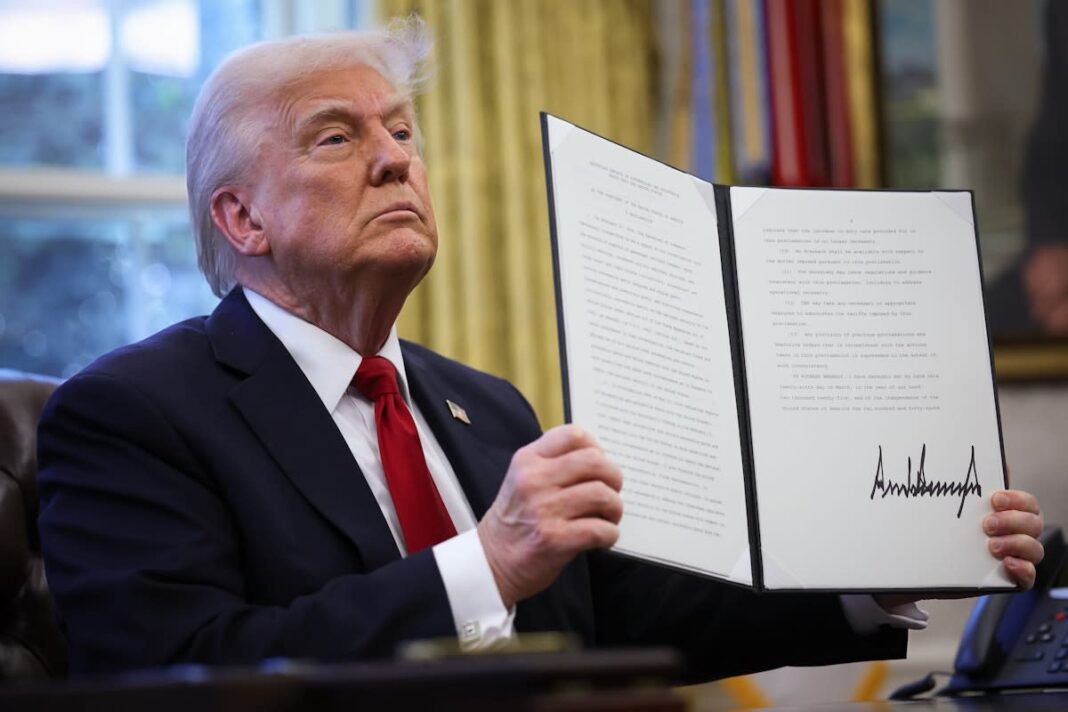Just three weeks after U.S. President Donald Trump abruptly launched a new wave of global trade tariffs, the first signs of economic fallout are beginning to emerge.
Just blocks away from the White House, the International Monetary Fund (IMF) is expected to downgrade its global growth forecast in its upcoming report, scheduled for release on Tuesday. IMF Managing Director Kristalina Georgieva has stated that while a global recession is not imminent, growth will be “significantly” revised downward, and inflation could surge in several countries. She also warned that prolonged uncertainty could spark financial market volatility.
Economists at Bloomberg Economics caution that the IMF tends to be optimistic during major crises — meaning the real impact could be worse than what’s reflected in the initial numbers.
This Wednesday, a slate of Purchasing Managers’ Index (PMI) data from the U.S., Japan, and Europe will offer a clearer picture of how manufacturing and services sectors have responded to Trump’s tariffs, which took effect April 2. Although parts of the tariff rollout have since been paused, the data will help central bankers and finance ministers meeting in Washington assess the early damage from Trump’s push to reshape global trade.
But the economic clouds looming over the world aren’t likely to clear anytime soon.
In the U.S., Federal Reserve Chair Jerome Powell has signaled the Fed will remain “patient” and wait for more data before adjusting monetary policy. Meanwhile, Trump has continued pressuring the Fed, raising concerns about the central bank’s independence.
Several key U.S. economic reports are expected this week, including new home sales, durable goods orders, and consumer sentiment from the University of Michigan. These indicators will shed light on how American households are reacting to the prospect of rising prices due to the tariffs. At the same time, Trump’s ongoing attempts to influence the Fed have intensified tensions between the White House and the central bank.
To the north, Canada’s election campaign enters its final week. Prime Minister Mark Carney and the Liberal Party hold a roughly 5-point lead. Observers say the trade turmoil with the U.S. could help the Liberals secure a majority government. Upcoming Canadian retail and consumer spending data for February and March will show whether households are continuing to tighten their belts for a third consecutive month amid economic anxiety.
Across Asia, China has kept lending rates steady, while Indonesia, the Philippines, and South Korea are set to release key data on trade, GDP forecasts, and consumer confidence. South Korea’s Trade Minister Ahn Duk-geun is making his third trip to the U.S. to negotiate potential tariff relief.
Japan is also engaged in talks with Washington and has reportedly considered easing its auto safety standards to help secure a deal.
In Europe, upcoming PMI figures and consumer confidence reports will reveal the extent of trade-related pressure on the eurozone economy. Germany and France will release crucial economic sentiment surveys, while market watchers await comments from central banks in Switzerland and the U.K.
In Latin America, Argentina is set to release preliminary GDP figures following a $20 billion agreement with the IMF — with $12 billion already disbursed. Brazil, Mexico, and Colombia will also publish key economic indicators, with Mexico teetering on the edge of a technical recession after two straight quarters of negative growth. The first wave of consequences from Trump’s tariff policies is beginning to ripple across the globe, prompting governments, central banks, and businesses to reassess risk and brace for more uncertainty ahead. This may just be the beginning of a turbulent new chapter for the global economy.






